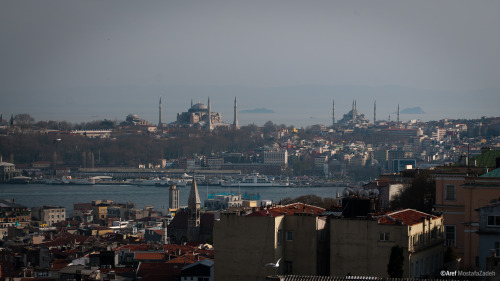
ANAMED Senior Fellow Matthew Harpster shares his impressions on being based at ANAMED, and how life in Istanbul can be exhilarating…
The past two months have been busy for me. Chris Roosevelt, our director at ANAMED, was kind and let me arrive late as my fieldwork in Italy at the end of September overlapped with the beginning of the term. Then, in October, I was away weekends either in Ankara or – at the end of the month – England. In November, it was more time away in Ankara or, for five days, in Iran with UNESCO. Add to this various reports, preparation for a guest seminar, sorting out my residence permit, settling details for a bank account, simply moving to Istanbul, and – somewhere in the midst of this – doing my research, and the past two months have been busy.
But, they’ve certainly been worth it. On the one hand, professionally, the chance to be based in Istanbul and at ANAMED, in particular, has been great. I’ve been working in Turkey, on and off, for a number of years, but I’ve never spent this much time in Istanbul, so I can see why this part of the city is so attractive to scholars. There’s an impressive concentration of universities, libraries, foreign and domestic research centers, and resources within walking distance, and I’m flattered that I can be a part of this. Personally, too, it’s been enjoyable. Yes, the noise from Istiklal is frustrating at night (I’ve never been this happy for bad weather), but I suppose that’s a part of living here. My aunt, a lifelong resident of New York City, once said that everyone should – for at least a year – live in NYC. I can say the same thing about Istanbul. Admittedly, being at ANAMED is almost ideal, but perhaps that’s a part of living here and a lesson to be learned – that living in Istanbul can be much much harder without the idealized environment we presently inhabit.
But life in Istanbul is also exhilarating, in ways both good and bad. Finding that a 30-minute taxi ride to Fatih can be replaced by a 20 minute ride on the metro for ten percent of the price, for example, or maneuvering through protests, demonstrations, street musicians, and delivery scooters while finding dinner. I finally visited the Boğaziçi campus, which was beautiful, and took an early-morning walk in Sultanahmet while waiting for the Iranian consulate to open. I’ve become much better at navigating my luggage through a crowded metro platform at Yenikapı, and finally learned which bus to take to Bebek for fish. I’m sure I’m frustrating my Turkish teacher with my poor study habits and attendance rate, but the past three months have certainly been an education.

The real question that most of us are facing, however, is what the next few months will bring. Some of us are lucky enough to know that – come June – we’ll have a place to go, a salary, and months or years of a predictable life ahead. Some of us, however, don’t know what will come, and that makes these few months at ANAMED – an opportunity valuing our skills and interests – particularly important. Will we find that our time in Istanbul is a catalyst for something more, or will we find, rather melodramatically, that we’re on the verge of something radically different? Yes, that’s what life holds, and yes, I’m sure there’s a pithy parallel to be drawn to the uncertainty of Istanbul itself, but there’s no avoiding it. I suppose there’s one more way I’m lucky to be in Istanbul, then, because if I’m on the verge of something new, it’s certainly an exciting place to experience what will come.

